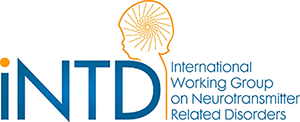Detection of 3-O-methyldopa in dried blood spots for neonatal diagnosis of aromatic L-amino-acid decarboxylase deficiency: The northeastern Italian experience
Objective: Aromatic L-amino acid decarboxylase (AADC) deficiency is a rare inherited autosomal recessive disorder of biogenic amine metabolism. Diagnosis requires analysis of neurotransmitter metabolites in cerebrospinal fluid, AADC enzyme activity analysis, or molecular analysis of the DDC gene. 3-O-methyldopa (3-OMD) is a key screening biomarker for AADC deficiency.
Methods: We describe a rapid method for 3-OMD determination in dried blood spots (DBS) using flow-injection analysis tandem mass spectrometry with NeoBase™ 2 reagents and 13C6-tyrosine as an internal standard, which are routinely used in high-throughput newborn screening. We assessed variability using quality control samples over a range of 3-OMD concentrations.
Results: Within-day and between-day precision determined with quality control samples demonstrated coefficients of variation <15%. 3-OMD concentrations in 1000 healthy newborns revealed a mean of 1.33 μmol/L (SD ± 0.56, range 0.61-3.05 μmol/L), 100 non-AADC control subjects (age 7 days – 1 year) showed a mean of 1.19 μmol/L (SD ± 0.35-2.00 μmol/L), and 81 patients receiving oral L-Dopa had a mean 3-OMD concentration of 14.90 μmol/L (SD ± 14.18, range 0.4-80.3 μmol/L). A patient with confirmed AADC was retrospectively analyzed and correctly identified (3-OMD 10.51 μmol/L). In April 2020, we started a pilot project for identifying AADC deficiency in DBSs routinely submitted to the expanded newborn screening program. 3-OMD concentrations were measured in 21,867 samples; no patients with AADC deficiency were identified. One newborn had a high 3-OMD concentration due to maternal L-Dopa treatment.
Discussion: We demonstrated a rapid new method to identify AADC deficiency using reagents and equipment already widely used in newborn screening programs. Although our study is limited, introduction of our method in expanded neonatal screening is feasible and could facilitate deployment of screening, allowing for early diagnosis that is important for effective treatment.


